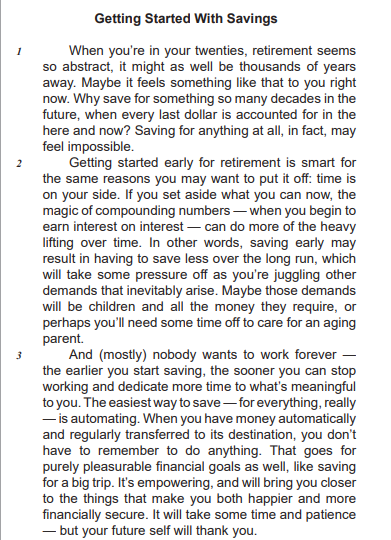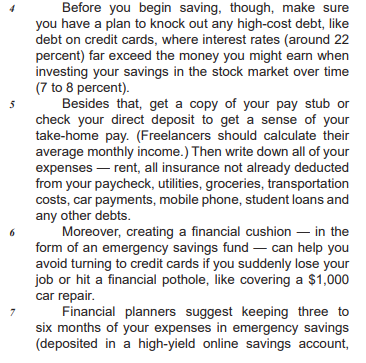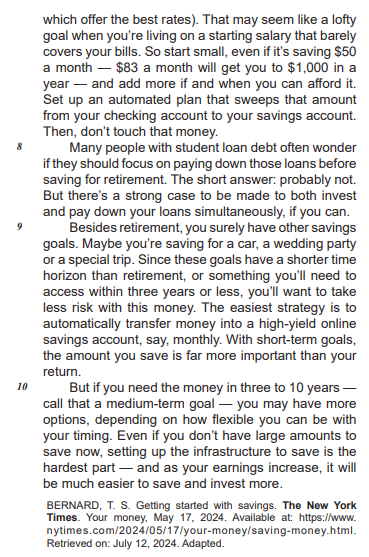Questões de Concurso
Sobre inglês nível médio
Foram encontradas 1.642 questões
Resolva questões gratuitamente!
Junte-se a mais de 4 milhões de concurseiros!
McDonald’s and Wendy’s investors group demands fixes to franchisee child labor issues
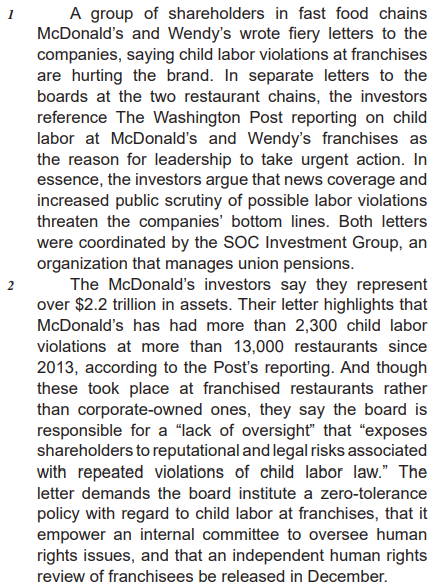
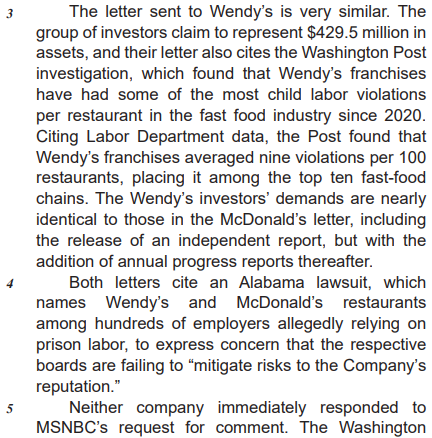

Available at: https://www.msnbc.com/the-reidout/reidout-blog/ mcdonalds-wendys-investors-child-labor-rcna151722. Retrieved on: May 14, 2024. Adapted.
McDonald’s and Wendy’s investors group demands fixes to franchisee child labor issues



Available at: https://www.msnbc.com/the-reidout/reidout-blog/ mcdonalds-wendys-investors-child-labor-rcna151722. Retrieved on: May 14, 2024. Adapted.
McDonald’s and Wendy’s investors group demands fixes to franchisee child labor issues



Available at: https://www.msnbc.com/the-reidout/reidout-blog/ mcdonalds-wendys-investors-child-labor-rcna151722. Retrieved on: May 14, 2024. Adapted.
McDonald’s and Wendy’s investors group demands fixes to franchisee child labor issues



Available at: https://www.msnbc.com/the-reidout/reidout-blog/ mcdonalds-wendys-investors-child-labor-rcna151722. Retrieved on: May 14, 2024. Adapted.
McDonald’s and Wendy’s investors group demands fixes to franchisee child labor issues



Available at: https://www.msnbc.com/the-reidout/reidout-blog/ mcdonalds-wendys-investors-child-labor-rcna151722. Retrieved on: May 14, 2024. Adapted.
Leia o texto e responda as questões.
Read the text and provide responses to questions.
California woman arrested in theft of 65 Stanley cups - valued at nearly $2,500
By C Mandler
January 22, 2024 / 3:05 PM EST / CBS News
On Jan. 17, police in Roseville, California, discovered a 23-year-old woman had allegedly absconded with 65 Stanley cups from a nearby store — worth nearly $2,500.
"Staff saw a woman take a shopping cart full of Stanley water bottles without paying for them," said the Roseville Police Department in a statement on Facebook.
After being confronted by retail staff, the woman refused to stop, stuffing the cups into her car. She was subsequently arrested on a charge of grand theft and has yet to be identified by officers.
"While Stanley Quenchers are all the rage, we strongly advise against turning to crime to fulfill your hydration habits," said the Roseville police.
One commenter on the post pointed out that in addition to the trove of cups in the trunk and front seat, there was also a bright red Stanley cup in the cup holder, which they hoped police also confiscated. Colorful Stanley cups caused consumer mayhem earlier this month when the brand dropped a limited-edition batch of Valentine's Day colors of the popular tumbler at in-Target Starbucks locations.
Viral video showed shoppers running toward displays of the cups, as well as long lines of consumers waiting to get their hands on one of the coveted Quenchers.
https://www.cbsnews.com/news/stanley-cups-theft-california-target-2500-65/ (First published on January 22, 2024 /3:05PM EST)
C Mandler is a social media producer and trending topics writer for CBS News, focusing on American politics and LGBTQ+ issues.
FIGURA 1
Fonte: CBS NEWS, 2024.
Based on the information provided in the text, select the correct statement regarding the influence of cultural and societal norms on criminal acts and their impact on perspectives on crime and punishment:





